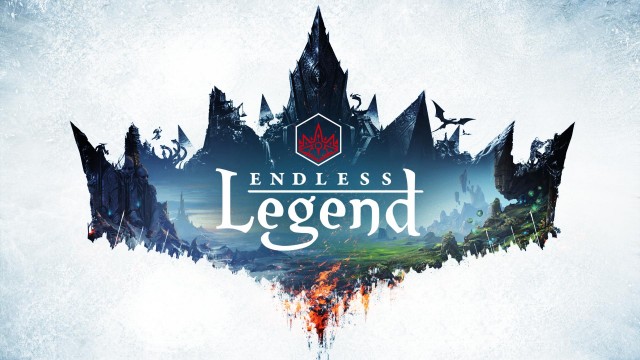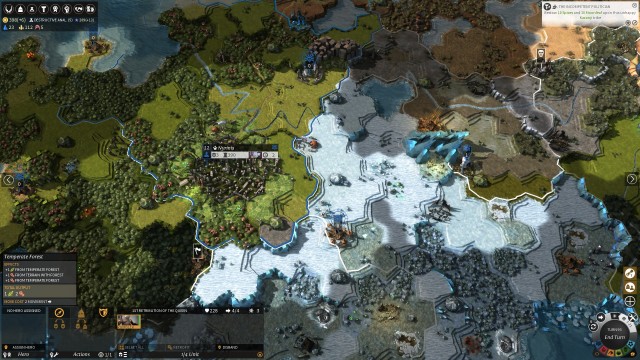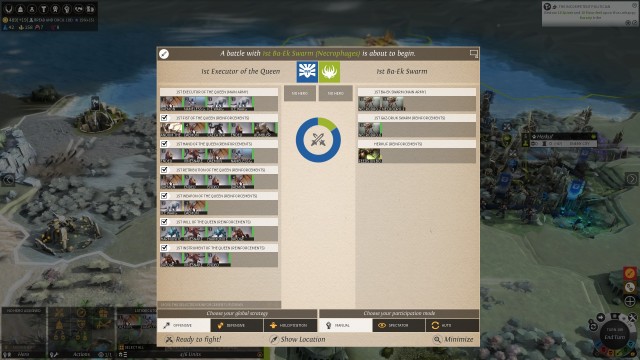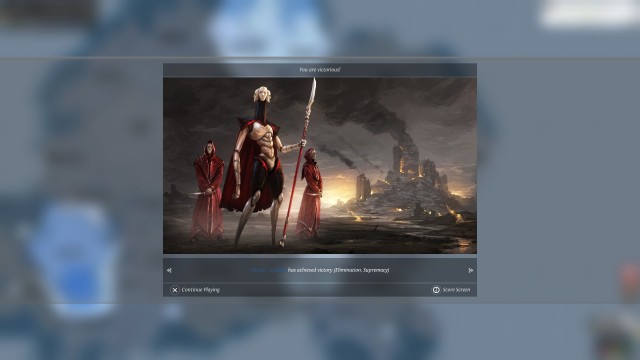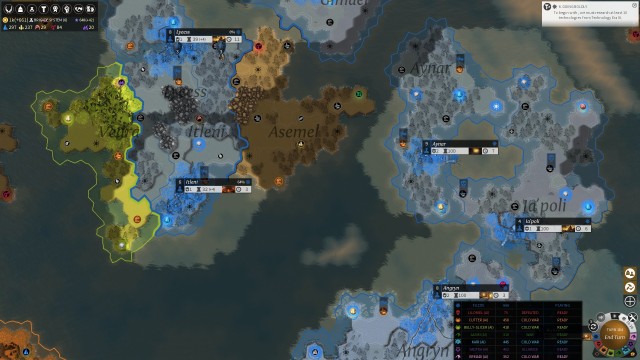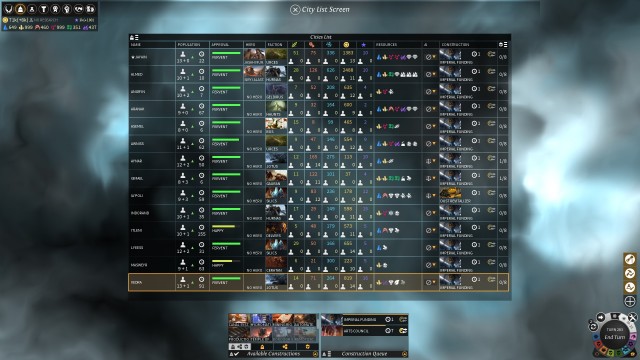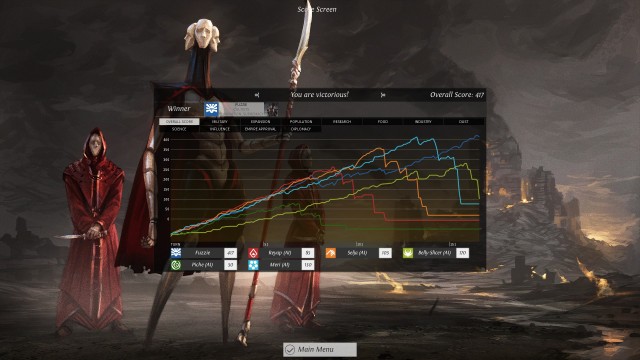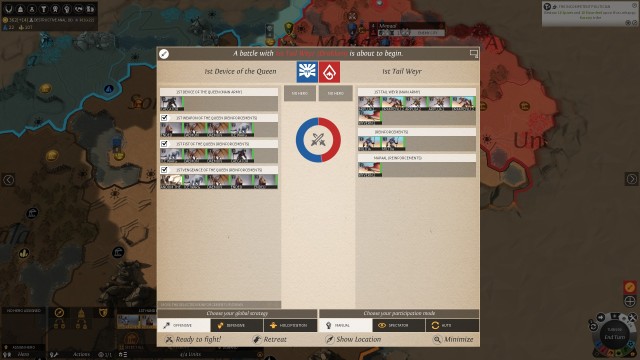Endless Legend is a 4X turn-based fantasy strategy game.
The term 4X, coined by Alan Emrich, stands for “explore, expand, exploit and exterminate“. Perhaps the most popular example of such a game is Sid Meier’s Civilization, which just so happens to also be a turn-based strategy game. This is why, it is not exactly inaccurate to describe Endless Legend as Civilization but with a fantasy setting and environment.
The game is set in the Endless universe where other Endless games (which are of different genres) also take place. The player is in control of a faction of aliens on a planet called Auriga. The player fights both the environment and other players to satisfy one of many victory conditions before any other player.
http://www.endless-legend.com/
https://www.youtube.com/watch?v=wTt1c9IIoRI
Analysis
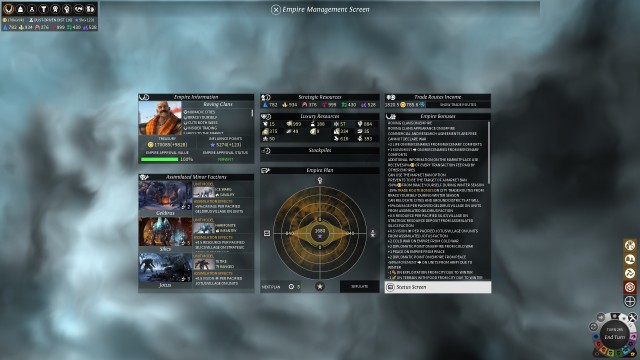 The Elemental Tetrad
The Elemental Tetrad
- Aesthetics: set in a fantasy world, the artwork and the environment is very diverse and beautiful.
- Mechanics: the game is turn-based and has deep strategy, with multiple ways to achieve victory.
- Story: although there is no campaign mode, the lore in the world is very detailed, vast and immersive
- Technology: because of the myriad of strategic options available to the player, the computer players take considerable CPU power to process. However, because it’s a turn-based game, the negative effects are minimized.
- Overall: I feel there is a very good balance between the 4 elements. In fact, I can see how they complement each other and work in synergy to produce a well-rounded game.
The Lens of Secrets
- Like most territorial strategy games, Endless Legend has fog of war. This means players can only see limited areas of the game map in places where the player has units or has a diplomatic agreement to share vision with another player in the map.
- The map is in constant flux, when a player moves a unit away from an area, the area might not be the same when they regain vision by putting another unit in the area.
- Some factions have access to more information than the others. For example, the Drakken, which is the diplomatic faction, knows the positions of the capitols of all players in map; the Roving Clans, which is the economic power faction, has insider trading information of all players in the marketplace.
- A good balance of secrecy between players keeps the gameplay interesting.
The Lens of Expected Value
- When units attack, there are 4 kinds of outcomes: critical fail, fumble, normal hit and critical hit. These outcomes have odds that are shown to the player and they are different for different matchups between any 2 units.
- Knowing the odds, the player can–for example–gamble massive damage on critical hits, or consistent normal hits without misses.
- A good understanding of the odds is important for unit survivability.
- Even though this introduces some random chance to the game, random chance is not overpowering because it could be calculated so as to minimize the effects of randomness on the outcome of battle.
The Lens of Goals
- There are several goals to the game but all the players need to do is achieve one of them before any other player.
- The different victories are: Wonder, Conquest, Supremacy, Elimination, Scientific, Economic, Diplomatic and Score
- Each race is geared towards a specific kind of victory, but the player is free to pursue any other kind of victory to win the game.
- The player are free to pursue short-term goals such as quests, exploring and small battles but should make sure they also have lasting long-term benefit or they may not win the game.
- The myriad of viable winning goals makes a flexible experience.
The Lens of Functional Space
- The game map is discrete and is in a hexagonal grid.
- The game map is 2D. The world is cylindrical (wraparound on the east and west, but boundaries on the north and south)
- There are smaller subspaces in the game map for military engagement. It also utilises a hexagonal grid and it is connected to the bigger game map at the hexagonal tile where two or more armies engage.
- The two levels of spaces makes battles up-close inside closed terrain, while making plenty of room to expand and explore territory; making the best of both worlds.
The Lens of Economy
- The game has 7 different resources: Food, Industry, Dust, Science, Influence, Luxury Resources and Strategic Resources.
- In general, the player has to build some buildings to generate any particular resource. Also, the type of resources are generally dependant on the terrain of the map.
- The player can direct portions of the population of a city into either Food, Industry, Dust, Science or Influence as he pleases.
- Units and building have a Dust operating cost. If the player runs out of Dust (essentially money), he is forced to sell off units and buildings.
- There are diminishing returns for every resource, so a player must balance production of each resource for optimal economic performance.
The Lens of Fairness
- The game is asymmetrical in the sense that each race is good at certain things but bad at different things.
- The game is also asymmetrical in the sense that terrain is randomly generated and have different properties.
- The asymmetric gameplay makes gameplay more interesting and more fantasy-like. It opens up more possibilities of cooperation and competition between players.
- The game feels fair and each race has similar chances of winning. The outcome is usually decided by skill and strategy rather than random chance.
The Lens of Balance
- Even though the gameplay is asymmetrical, the game feels balanced.
- Race abilities are not overpowered because they can be countered by other players.
- Differences in abilities forces players to strategize in order to exploit own advantages and enemy’s disadvantages, a key part in many strategic games.

